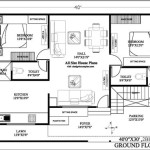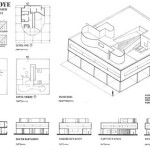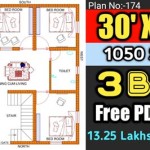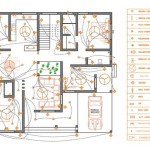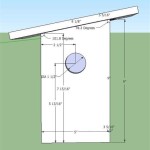Sewerage Plans for Your House in Brisbane
Planning a new house build or undertaking a major renovation in Brisbane? One crucial aspect you need to consider is the sewerage system. A well-designed sewerage plan ensures proper waste disposal, protects your home from health hazards, and complies with local regulations. This article aims to provide you with essential information about sewerage plans for your house in Brisbane, covering key considerations and the processes involved.
Understanding Sewerage Systems in Brisbane
Brisbane's sewerage system relies on a network of underground pipes that collect wastewater from homes, businesses, and industries. This wastewater is then transported to treatment plants for purification before being discharged back into the environment. The type of sewerage system you need for your house depends on factors such as the property's location, the size of your home, and your specific needs. In Brisbane, you can choose between:
- Sewerage Connection: This is the most common type of sewerage system, where your home is connected to the public sewer network.
- On-site Sewerage System: This option is typically used for properties that are not connected to the public sewer network. On-site systems involve the use of septic tanks, treatment plants, or other methods to manage wastewater on your property.
Essential Considerations for Sewerage Plans
Developing a comprehensive sewerage plan for your house in Brisbane entails several important considerations:
1. Local Regulations and Compliance
Brisbane City Council (BCC) sets strict regulations regarding sewerage systems. You must adhere to these regulations to ensure your plan is approved and meets safety standards. This includes:
- Building Code of Australia (BCA): The BCA provides guidelines on plumbing and drainage, which are essential for sewerage system design.
- Specific Requirements for New or Renovated Homes: BCC may have additional requirements for new constructions or renovations, depending on factors like the property's location, existing infrastructure, and the extent of the work.
- Property Boundaries and Easements: Ensure that your sewerage plans comply with property boundaries and do not encroach on neighboring properties or easements.
2. Property Topography and Soil Conditions
The topography of your land and the soil conditions will significantly affect the design of your sewerage system. Considerations include:
- Slope and Drainage: The natural slope of your land will impact how wastewater travels through the system. You may need to incorporate pumps or other mechanisms to facilitate flow.
- Soil Type: The type of soil will influence the installation of pipes and the overall performance of the system. For example, clay soils may require specific pipe materials or methods to prevent clogging.
- Ground Water Levels: The proximity of groundwater can impact the depth and placement of pipes. You may need to take measures to prevent contamination of underground water supplies.
3. Water Usage and Household Size
The number of occupants in your home and their water usage patterns will determine the size and capacity of your sewerage system. Higher water usage, particularly from appliances like dishwashers and washing machines, necessitates a larger capacity system. You need to accurately estimate your daily water consumption and consider future needs when planning your sewerage system.
4. Accessibility and Maintenance
Planning for easy access and maintenance is crucial for your sewerage system. You'll need to consider:
- Location of Access Points: Make sure access points for inspection and maintenance are readily accessible, ideally via manholes or easily removable covers.
- Pipe Materials: Choose suitable pipe materials that are robust, corrosion-resistant, and easy to maintain.
- System Design: Consider a system design that minimizes the need for frequent maintenance and prevents potential issues.
Steps Involved in Getting Your Sewerage Plan Approved
Once you have considered all essential factors, you can proceed with the following steps to get your sewerage plan approved in Brisbane:
- Engage a Licensed Plumber: A licensed plumber is crucial for designing your sewerage plan, ensuring it meets local regulations and complies with the Building Code of Australia. They will visit your property, assess the site, and prepare detailed plans.
- Submit Application to BCC: Your plumber will submit the sewerage plan to BCC for approval. This typically involves a detailed application form and accompanying drawings specifying the system's design, materials, and location.
- Review and Approval Process: BCC will review your plan and may conduct inspections to ensure its compliance. If the plan is approved, BCC will issue a permit for construction.
- Construction and Inspection: Once you have obtained your permit, you can proceed with the construction of your sewerage system. BCC will conduct inspections at various stages of construction to ensure proper installation and compliance.
- Final Inspection and Certification: Once the installation is complete, BCC will conduct a final inspection. If the system meets all requirements, it will be certified, and you can start using your new sewerage system.
A well-designed sewerage plan is essential for the health and safety of your house in Brisbane. By understanding local regulations, considering property-specific factors, and engaging a qualified plumber, you can ensure your plans meet all requirements and create a sustainable and efficient sewerage system for your home.

How To Obtain Before You Dig Plans

Sewerage Backyard Pods

Where Can I Find Drainage Plans For My House Soho Real Estate

Where Can I Find Drainage Plans For My House Soho Real Estate
Building Over Sewer Brisbane Property

Why You Need A Drainage Plan For Your New Home Homes By Howe

How To Find The Sewer Line On Your Property Steps Pictures And Where It Pipe Relining Company

Your Responsibilities Urban Utilities

Subdivision Restrictions Town Planners Brisbane Consult Planning

Sewer Diagram Infotrackgo

